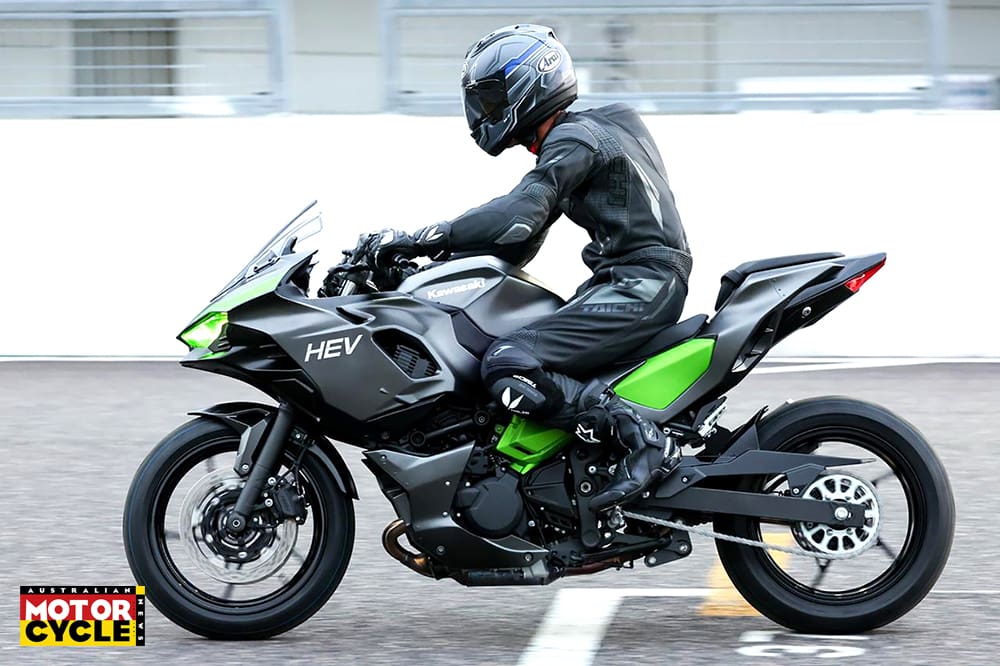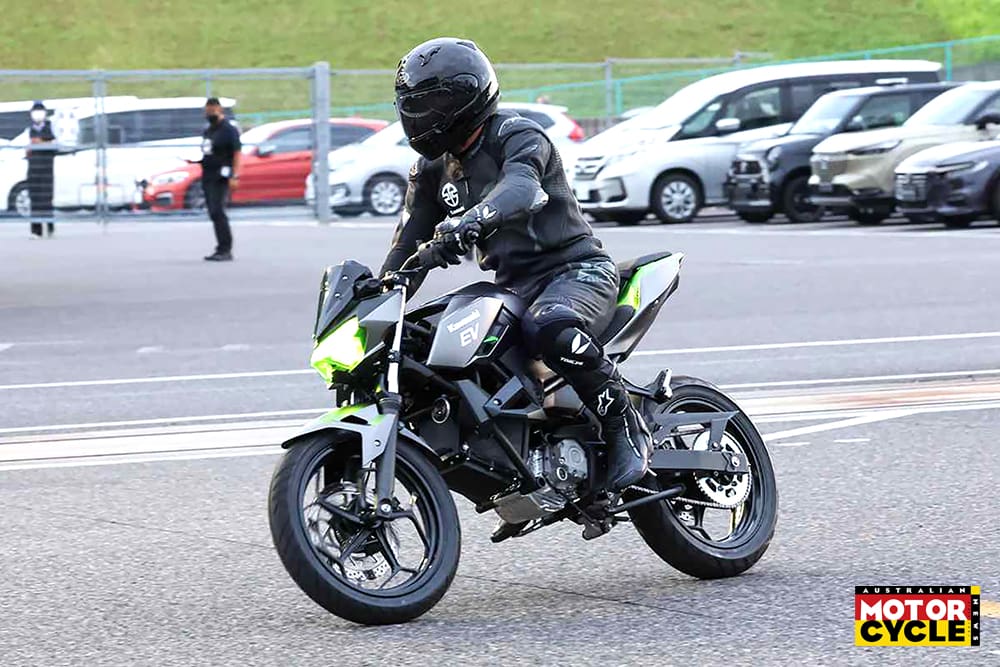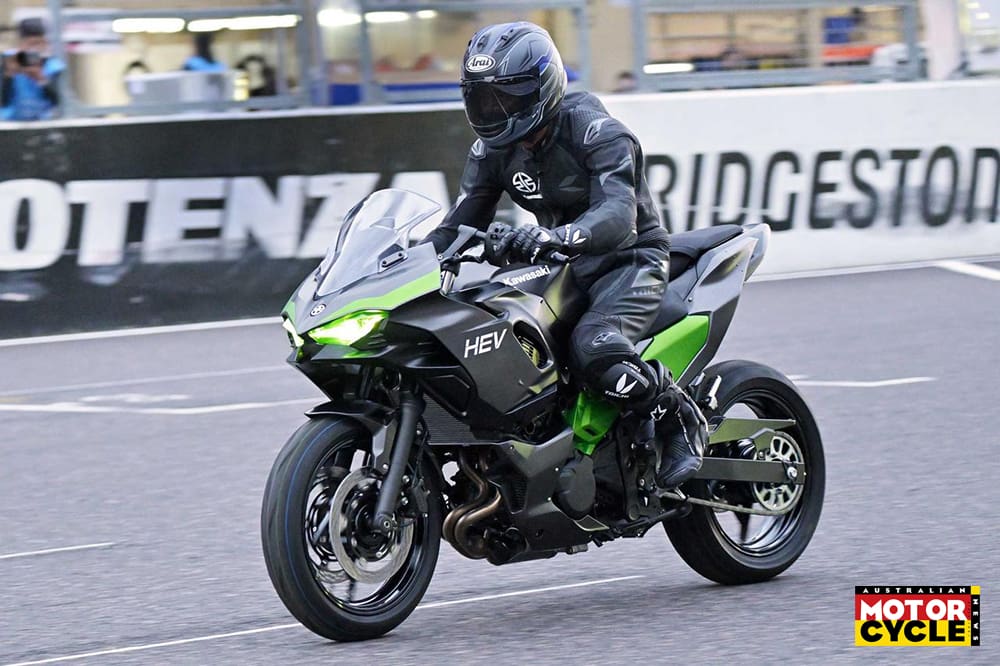In a reveal that even shocked factory insiders, Kawasaki used the famous Suzuka 8 Hours Race in Japan to give a sneak peek at two prototypes from its upcoming electric/hybrid range.
A fully-electric nakedbike and a faired hybrid model made a brief demo run at dusk down the main straight in front of pitlane, which was crowded with leading race teams from rival brands.

Japanese publication AutoBy snapped these images that preview a carbon-neutral range Kawasaki is expected to start putting on sale in 2023. Having shown the results of a decade-long electric-bike development program in 2019, Kawasaki finally committed to the idea of battery power last year. It promised to introduce at least 10 electric or hybrid models by 2025 and completely electrify its range by 2035.
The first step in Kawasaki’s plan is introduction of three electric models for the 2023 range. These have already started, albeit on a low-key scale, with the Elektrode, but that’s just a balance bike for kids. The next additions will be more interesting: a duo of 125cc-equivalent electric bikes.
Leaked via American documents, they appear to be eligible for the 125cc class, performance-wise, and eligible to use as learner models in Europe.

The electric prototype
During Kawasaki’s surprise Suzuka run, the electric bike on show was a naked roadster about the size of a conventional 125cc. However its bodywork is borrowed straight from the Z400, and isn’t likely to be representative of the final production machine, but the mechanical parts underneath are probably the 2023 showroom parts.
They’re something of a surprise, as the engineering is a notable shift away from the previous electric prototype shown in 2019. While that was also a 125cc-equivalent, it had unusual engineering including a vast battery pack and a high-speed CHAdeMo charging socket, as well as a four-speed manual transmission and a conventional clutch to appeal to existing riders.

The new prototype is very different and uses a single-speed reduction gearbox like more conventional electric bikes. The rear brake is still foot-operated, leaving a lever-free left handle bar. Although we can’t be certain, it also appears that Kawasaki may have ditched the big, heavy and expensive battery, as well as the costly CHAdeMo charger, in favour of a set of removable battery packs.
Kawasaki is part of the Japanese consortium on swappable motorcycle batteries, which also includes Honda, Suzuki and Yamaha. It has now established a standardised battery and connector specification to allow the development of swappable packs that can be transferred between the companies’ bikes. That means instead of needing fast charging and heavy, long-range batteries, the companies can work together to create a network of battery-swap stations to allow for high speed ‘refuelling’.

The hybrid
Kawasaki first showed its prototype hybrid bike last year, using the parallel-twin engine from either the Z250 or Z400. However the Suzuka hybrid’s exhaust system more closely matched the Z400’s, suggesting the larger capacity. To this engine was added an electric motor, sitting above the gearbox and connected via a clutch that allows it to be engaged or disengaged.
When engaged, it can run either as a motor, adding performance, or running with the petrol engine disengaged in pure electric mode, or as a generator to recharge the relatively small 48V battery that supplies it.
While pure electric range will be limited to just a few kilometres, it will allow inner-city running in zero-emissions mode. During highway runs, the petrol engine takes the strain, recharging the battery in the process, and when max performance is needed both powertrains can operate in harmony, giving 600cc-class speed.

To allow the seamless switching between powertrains, the transmission is semi-auto, with a pushbutton shifter on the left handlebar. Patents have suggested that the power boost mode will be accessed via a thumb trigger attached to the throttle on the right-hand bar.
At last year’s low-key showing, the hybrid was referred to as a prototype and shown without its bodywork, but the Suzuka prototype featured a full fairing that, unlike the electric model, appears to be largely purpose-made. The frame, suspension and brakes all appeared to be borrowed in part from the Z400/Ninja 400, along with the parallel-twin engine.











